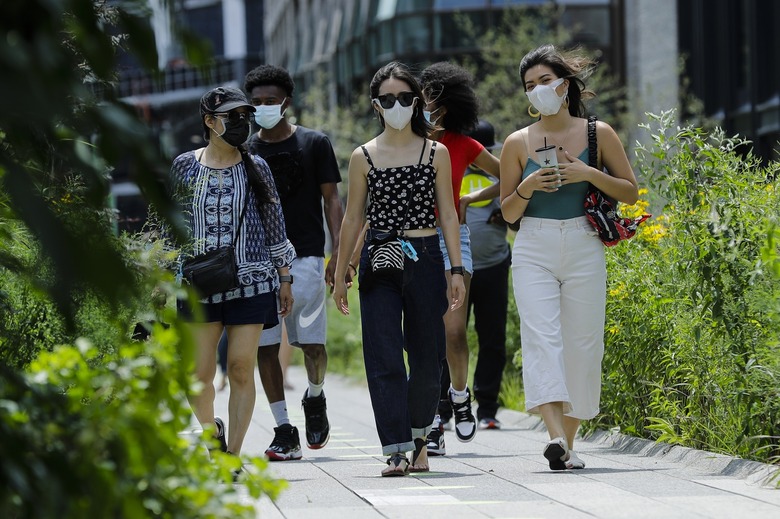Scientists Just Proved The Scariest Thing About The Coronavirus
- The World Health Organization (WHO) confirmed a few weeks ago that coronavirus is transmissible through the air, responding to research from hundreds of scientists. The group stopped short of supporting face mask mandates, however.
- Now, a new study proves what we all feared: The coronavirus samples collected from aerosols in rooms with COVID-19 patients are indeed infectious.
- Face masks, social distancing, and handwashing can protect against coronavirus in droplets and airborne spread.
The novel coronavirus spreads mainly via droplets, which are particles of saliva that you can eject when coughing, sneezing, and even just speaking. They can reach other people and surfaces with ease. That's why we've been advised for so long to wash our hands often, practice social distancing, and wear face masks. But researchers also proved that some of the droplets are a lot smaller than we initially thought. The water evaporates after these droplets are ejected from someone's mouth, and they become aerosols that can float in the air for much longer than large droplets. Rather than landing immediately on surfaces, they can travel over greater distances so they're much more dangerous than large droplets.
An increasing body of research on the matter prompted 239 scientists to urge the World Health Organization (WHO) to acknowledge airborne transmission. The WHO did say there's increasing evidence of airborne COVID-19 spread via aerosols, but it maintained its stance that droplet transmission is prevalent. The WHO stopped short of urging governments to institute measures for handling airborne transmission, which could include face mask mandates and changes to air ventilation indoors.
Two important questions need to be addressed when it comes to airborne transmission, and a new study just answered one of them. We have no idea what quantity of novel coronavirus in aerosols is enough to cause an infection, but researchers have now proven that coronavirus in aerosols is infectious.
The scientists at the University of Nebraska published an early version of their study in medRxiv, which means the work isn't peer-reviewed for the time being. The researchers collected SARS-CoV-2 samples from aerosols in five rooms with COVID-19 patients at a height of about a foot above their beds. The patients were talking, and the researchers used a device that's about the size of a cell phone to sweep up these tiny particles.
"It is actually fairly difficult, "University of Nebraska Medical Center associate professor Joshua Santarpia told AFP about the process. "The concentrations are typically very low, [so] your chances of recovering material are small."
The microdroplets the team collected were as tiny as one micron in diameter, and they were placed in cultures to make them grow. That's the only way to prove that the virus in aerosols is still viable and can multiply if it infects cells. Of the 18 samples, three of them were able to replicate, which is proof that the aerosolized virus can be contagious. "It is replicated in cell culture and therefore infectious," the professor said.
This is the latest evidence that face masks are an absolute necessity when indoors, as they can reduce the spread of droplets of all sizes, including microdroplets that a person might eject while speaking. While it's unclear what kind of viral load in aerosols is needed for infection, it's evident that the more time you spend indoors with other people who continue to spread aerosols and regular droplets, the more likely you are to be infected.
Santarpia said of the current debate about airborne transmission "has become more political than scientific. I think most scientists that work on infectious diseases agree that there's likely an airborne component, though we may quibble over how large."
Separately, Virginia Tech professor Linsey Marr, who wasn't associated with the study, told AFP that it was rare to obtain measurements of the amount of virus present in the air. "Based on what we know about other diseases and what we know so far about SARS-CoV-2, I think we can assume that if the virus is 'infectious in aerosols,' then we can become infected by breathing them in," she said.
The full study is available at this link.
